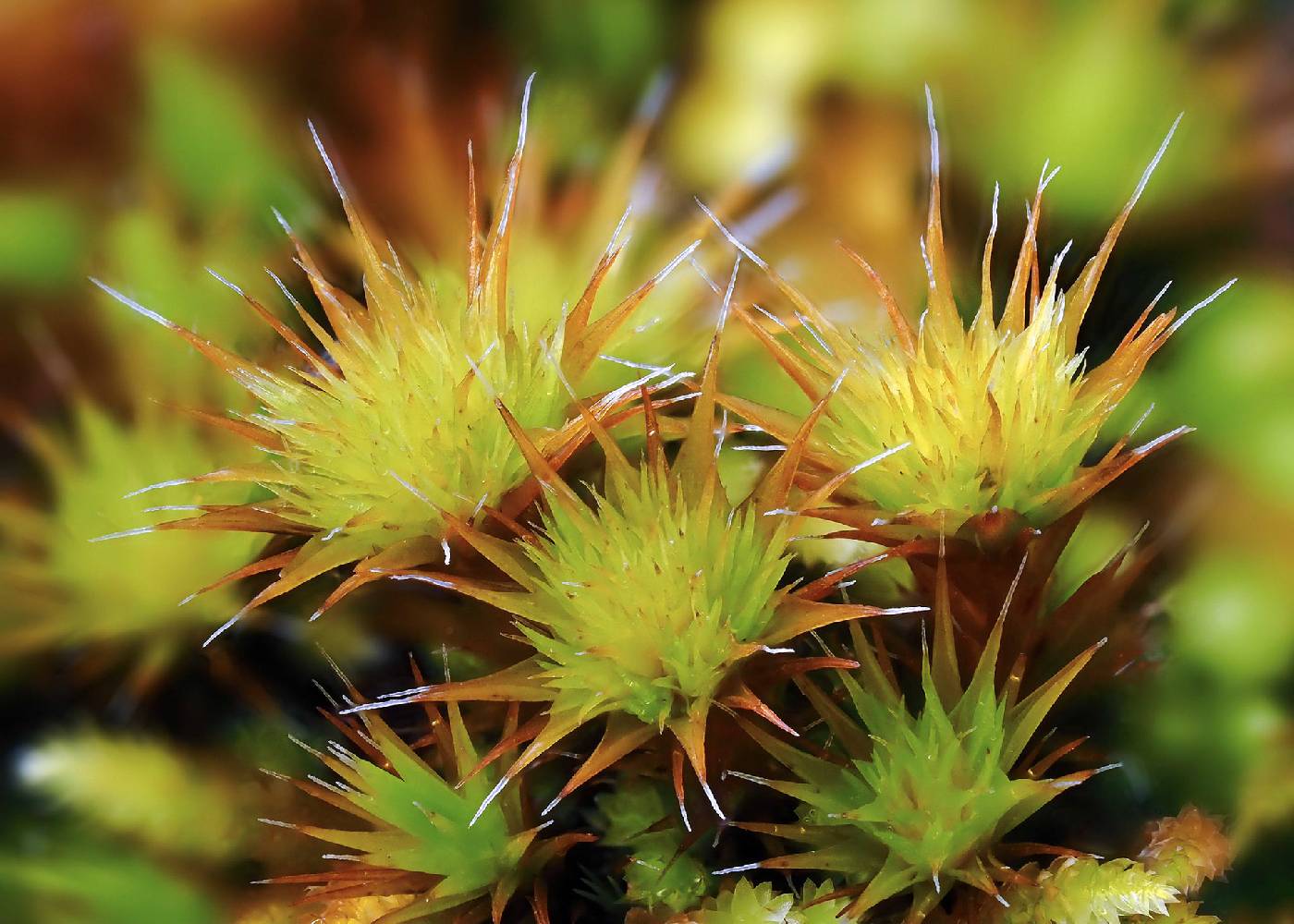
Consortium of Bryophyte Herbaria
- building a Consortium of Bryophytes and Lichens as keystones of cryptobiotic communities -
|
Family: Leucobryaceae |
Plants: usually 3–10 cm, occasionally longer. Stems: usually simple, not tomentose or with dense reddish or whitish tomentum. Leaves: 3–12 mm, erect-patent or appressed foliate, narrowly lanceolate, ending in a smooth or denticulate, straight or reflexed tip; alar cells large, inflated, hyaline or reddish brown, or not differentiated; basal laminal cells thin-walled, hyaline, or thick-walled, chlorophyllose, sometimes with pitted walls, rectangular to subquadrate; distal laminal cell walls incrassate, quadrate to short-rectangular, oblique, or oval to elongate oval; costa strong, filling 1/3–4/5 of leaf width, excurrent in a more or less long, chlorophyllose or hyaline awn, in transverse section showing a median band of deuters, an adaxial layer of hyalocysts, substereids or stereids, and abaxially layers of stereid or non-stereid cells, and an abaxial row of chlorocysts; abaxial side of the costa smooth, ridged or lamellose. : Specialized asexual reproduction by brood leaves, microphyllous branches, deciduous leaves or stem tips or rhizoidal tubers. Sexual: condition dioicous. Perichaetia: terminal, often bud like, rarely pseudolateral; perichaetial leaves with a broader, sheathing base and a long, narrow subula. Seta: 5–10 mm, those of young sporophytes curved downward, pushing the immature capsule between the comal leaves and leaving the calyptra behind when the mature capsule curves upward, sinuose, twisted, cygneous when wet and performing uncoiling movements. Capsule: erect and symmetric or curved and asymmetric, sometimes strumose, furrowed when empty; annulus present but not dehiscent; operculum rostrate, half as long as the capsule; peristome teeth divided to the middle in two prongs, reddish or orange and horizontally striate proximally, hyaline and papillose distally. Calyptra: cucullate, ciliate or entire at base. Spores: ca. 13 µm, smooth or papillose. North America, Mexico, West Indies, Central America, South America, Europe, Asia, Africa, Atlantic Islands, Pacific Islands, Australia. Species ca. 180 (17 in the flora). The North American species of Campylopus were revised by J.-P. Frahm (1980) based on a study of more than 1000 herbarium specimens. At that time, four species of Campylopus were recorded as new to North America and two species were placed into synonymy. The most recent checklist of the mosses of North America (L. E. Anderson et al. 1990) lists 18 species. Of these, the record of C. zygodonticarpus is based on a misidentification and C. paradoxus is a superfluous name for C. flexuosus, which is also included in the list. Since that time, C. japonicus has been newly recorded for North America, resulting in a total of 17 species, and new names have been introduced for C. aureus, C. japonicus, and C. schwarzii. Campylopus was formerly divided into three subgenera on the basis of morphology of the transverse section of the costa. Although this classification is no longer used, the anatomy of the costa is still an important character for identification. It is, however, not in all cases necessary to prepare cross sections. The presence of adaxial stereids or hyalocysts can also be observed under the microscope by surface view of the adaxial side of the costa. Since the perichaetial leaves vary in both form and by the presence of thin-walled cells walls in species that usually have thick-walled cells, the study of such characters should be avoided. Alar cells are generally also not a valuable character in Campylopus; they are little differentiated in plants growing in damp habitats but are well developed in plants in exposed habitats with water uptake from the underground. The same is true for the presence or absence of a tomentum. Identification is facilitated if the ranges of the species are considered. Many species are found only very locally. Excluded Species: Campylopus zygodonticarpus (Müller Hal.) Paris L. E. Anderson et al. (1990) in their most recent checklist of the mosses of North America listed this species, based on a specimen (Anderson 26656, DUKE) collected in Mississippi in 1992, consisting of C. tallulensis. Campylopus subporodictyon (Brotherus) B. H. Allen & Ireland Known in North America only from British Columbia, this species has recently been transferred to Campylopus from Dicranoweisia. |
Powered by Symbiota.





